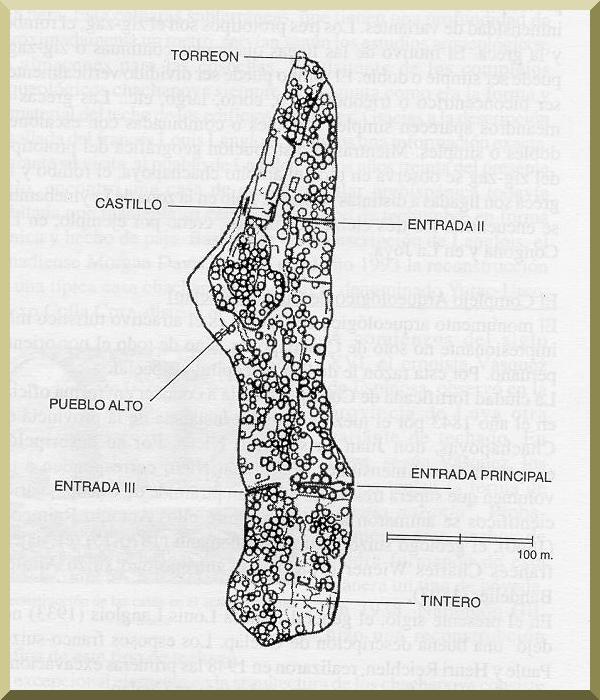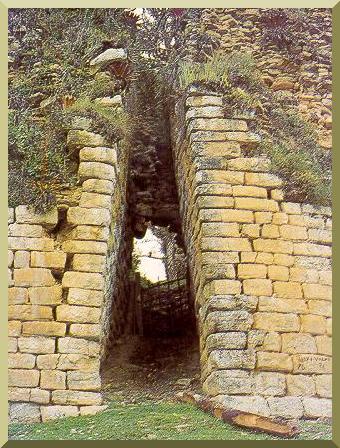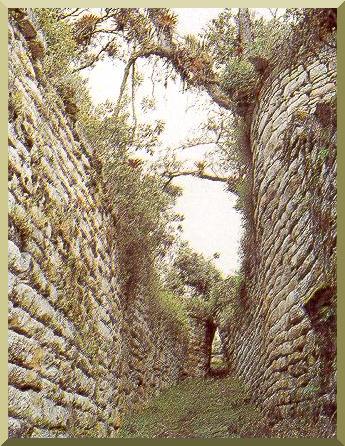|

| ||||
|
The fortified city of Cuelap is located in the district of Tingo, to the south of the town of Tingo, in the province of Luya, department of Amazonas, Peru, over a rocky hill at an altitude of 3000 m above sea level. Cuelap has two gigantic artificial platforms, superimposed one on top of the other, above which the populated center or city is built. The most impressive feature of Cuelap are the enormous defensive walls which delimit its "Lower Town" and "Upper Town." The construction material of the archaeological complex are limestone blocks. Cuelap is oriented from south to north, with a length of 584 m and width of approximately 110 m. The wall along the perimeter reaches a height of 20 m. The fortress has three entries: two to the east and one to the west. These three entries are built as long narrow passages which end in a small gate permitting the access of only one person.
In the Lower Town there are 335 structures of circular plan design and two small rectangular buildings. In the southern edge there is a circular building referred to as "El Tintero," which has a height of 5.5 m and the shape of an inverted cone. In the interior of El Tintero there is an internal chamber in the shape of a bottle of more than 5 m depth. In the Lower Town are found the only six buildings of Cuelap decorated with "frisos."
The Upper Town occupies the northwestern side of the fortress. It is surrounded by a wall which reaches a maximum height of 11.5 m. There is a narrow passageway to the Upper Town. In the Upper Twon there are approximately 80 circular and three rectangular buildings. Two buildings are worthy of mention due to their singular features: "El Castillo" and "El Torreon."
El Castillo has a rectangular layout and consists of three superimposed platforms. It probably was a ceremonial building. El Torreon, in the northmost edge of the Upper Town, is 7 m in height and is clearly a defensive structure. From El Torreon there is a panoramic view of incomparable beauty. The principal attraction of Cuelap is the typical vegetation of the area, which covers the fortress in its entirety. The constant and careful cleaning only affects the pasture and shrubs, while the big trees, adorned with orchids, persist. The vegetation gives a special mystical meaning to the place.
Source: "Chachapoyas, Guía de Viajeros," Peter Lerche, Lima, 1996. | ||||
|

